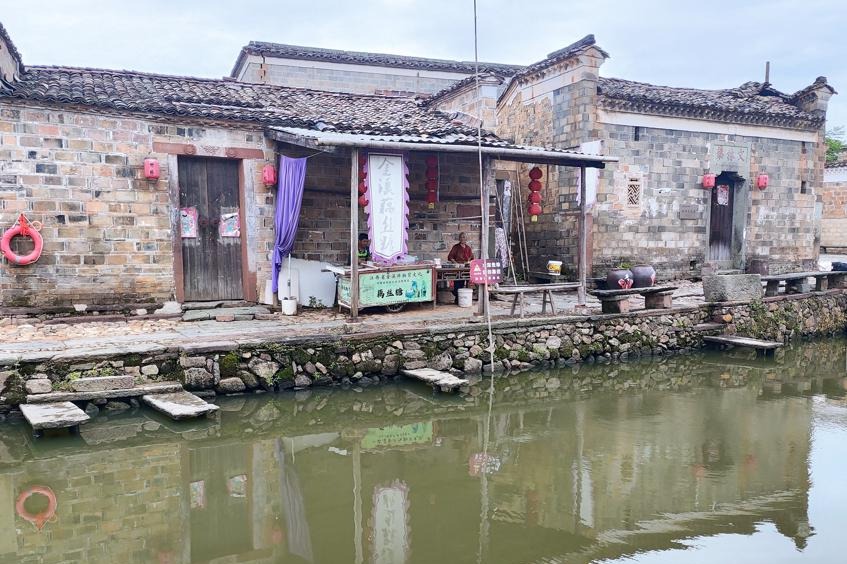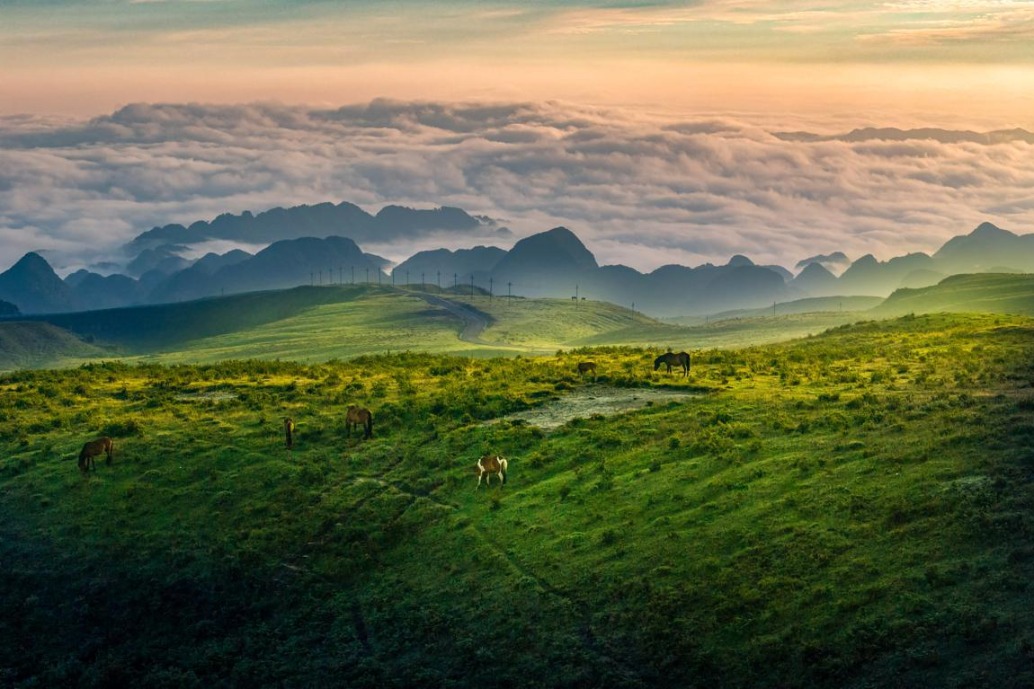Rules to reinforce riverfront readiness
Guideline seeks to increase capacity to deal with risks of flooding by 2035


China has introduced an overarching and comprehensive document guiding the governance of the country's rivers, with one of the major goals being boosting its ability to prevent and respond to flooding.
The guideline, issued by the general offices of the Communist Party of China Central Committee and the State Council, said China should significantly improve its capacity to ward off threats of flooding by 2035.
Pointing out the need to better adapt to climate change and enhance resilience against extreme rainfall and flooding, the guideline said authorities should determine targeted response approaches for different rivers in a scientific manner, and coordinate efforts to store, detain and discharge floodwaters.
The guideline calls for consolidating the system of flood prevention projects, such as reservoirs, river courses, embankments and flood storage and detention areas.
The country should advance the construction of flood-prevention reservoirs, while enhancing the ability of existing reservoirs, it said.
The guideline requires regular safety assessments of reservoirs and sluices and timely troubleshooting.
The performance of embankments along major rivers' main channel should be elevated to meet the flood-prevention standards, and efforts should be expedited to manage small and medium-sized rivers, it said.
According to the Ministry of Water Resources, China has seen distinct regional and seasonal patterns of droughts and floods this year, with a total of 329 rivers nationwide recording floods above warning levels and extreme downpours in some areas triggering mountain torrents, landslides and urban waterlogging as of July 4.
Liu Changjun, a researcher at the China Institute of Water Resources and Hydropower Research, said extreme precipitation and flooding in China have become more frequent in recent years due to climate change.
The northward shift of the rain belt is leading to stronger precipitation in northern China, which historically has been relatively drier, said Liu, who is also head of the institute's department of flood and drought disaster prevention and reduction research.
This entails the need to improve the resilience of reservoirs, embankments, flood storage and detention areas, and other flood-prevention projects in the country, he said.
The northern and western parts of the country need to be able to issue more accurate rainfall and flood forecasts and warnings, he added.
The guideline calls for a scientific, professional, strong and swift decision-making system, as well as an authoritative, uniform and efficient system of command to tackle major floods.
Requiring more intensive investigation to detect flood risks and hazards in river basins, it urges the authorities to improve flood risk maps and guide populations and industries in moving to regions with a lower risk.
The management of flood storage and detention areas should be strengthened to put tighter restrictions on population inflows and let populations in the areas move out in an orderly manner, the guideline said.
Flood storage and detention areas form an important "final defense line" in mitigating flooding, Liu said.
In order to ensure both effective flood discharge and the safety of people and their properties in these areas, China conducts assessments to determine flood risks, he said.
The country also uses remote sensing technologies to monitor and regulate the development of projects not related to flood control within the areas and safeguard their flood storage capacity, Liu said.
Remote sensing can be used to promptly detect illegal construction, such as when projects are being built without approval or their construction exceeds the permitted zone, he said.
The country is also working to reinforce its flood storage and detention areas. Earlier this year, the Ministry of Water Resources issued a three-year action plan to heighten safety and management of these areas.
The guideline also set several other goals for the country to achieve, including one to improve water conservation by 2035.
The authorities should make plans for urban, land and industrial development and the scale of population based on the local water resources, it said.
Unreasonable demand for water should be suppressed, it said, while prohibiting the construction of artificial lakes and other water features that are not in line with local conditions.
The country is tasked with carrying out "in-depth water conservancy and control" along the Yellow River, Haihe River, Liaohe River and inland river basins in northwestern regions, and increasing water conservation in agriculture and industries.
Water resources from rivers should also be allocated in a scientific manner, and the country's ability to guarantee water supply should be strengthened, among other requirements.
Xu Zongxue, a professor at the College of Water Sciences at Beijing Normal University, said water stress, like flooding, is a major issue China needs to address.
The issue is caused not only by the rapid expansion of cities, but also by the country's natural conditions, Xu said.
China has fewer water resources in its northern and western parts, and the country's rainfall occurs mostly from June to October, Xu said.
"As a result, some northern regions may experience water stress in spring, when the busy farming season requires consumption of a large amount of water," he said.
Cities need to use water more efficiently and refrain from excessive expansion, Xu said, adding that efforts are equally important to ensure adequate water resources for the sustainability of ecosystems.
The guideline, which also includes measures for improving the ecological environment of rivers and reducing water pollution, serves as the "top-level design" for the protection and treatment of China's rivers, and is significant for guaranteeing water security, an official from the Ministry of Water Resources said.
River protection and treatment is "a cause with a far-reaching effect and which bears on the great rejuvenation and sustainable development of the Chinese nation", the official told Xinhua News Agency.
Because of China's unique geographical and climate conditions, and characteristics of its water resources, population and economy, it's a "long-term, complicated and tough" task to protect and treat the country's rivers, the official said, adding that the work must be carried out with a broader perspective and advanced with stronger force.
The ministry will strengthen coordination with the National Development and Reform Commission and work with other departments to implement the guideline, promote good practices adopted by various authorities, and help address difficulties they run across during the implementation, the official said.
wangqingyun@chinadaily.com.cn





































